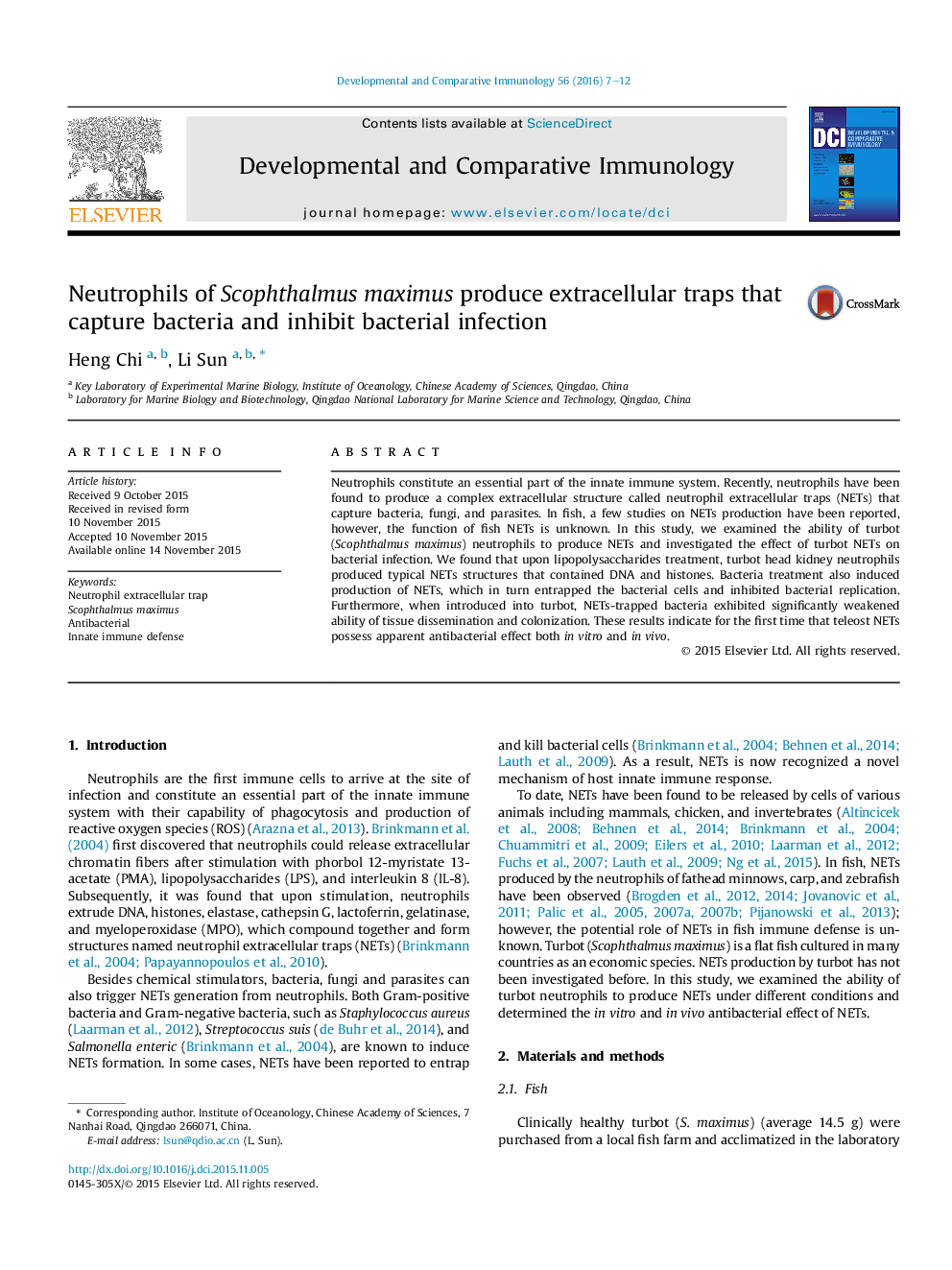| Article ID | Journal | Published Year | Pages | File Type |
|---|---|---|---|---|
| 2428868 | Developmental & Comparative Immunology | 2016 | 6 Pages |
•Turbot head kidney neutrophils produced NETs when stimulated with LPS and bacteria.•NETs structures contained DNA and histones.•NETs trapped and killed Escherichia coli but did not kill Pseudomonas fluorescens.•NETs inhibited the replication of P. fluorescens in vitro.•NETs impaired the ability of P. fluorescens to disseminate into turbot tissues.
Neutrophils constitute an essential part of the innate immune system. Recently, neutrophils have been found to produce a complex extracellular structure called neutrophil extracellular traps (NETs) that capture bacteria, fungi, and parasites. In fish, a few studies on NETs production have been reported, however, the function of fish NETs is unknown. In this study, we examined the ability of turbot (Scophthalmus maximus) neutrophils to produce NETs and investigated the effect of turbot NETs on bacterial infection. We found that upon lipopolysaccharides treatment, turbot head kidney neutrophils produced typical NETs structures that contained DNA and histones. Bacteria treatment also induced production of NETs, which in turn entrapped the bacterial cells and inhibited bacterial replication. Furthermore, when introduced into turbot, NETs-trapped bacteria exhibited significantly weakened ability of tissue dissemination and colonization. These results indicate for the first time that teleost NETs possess apparent antibacterial effect both in vitro and in vivo.
